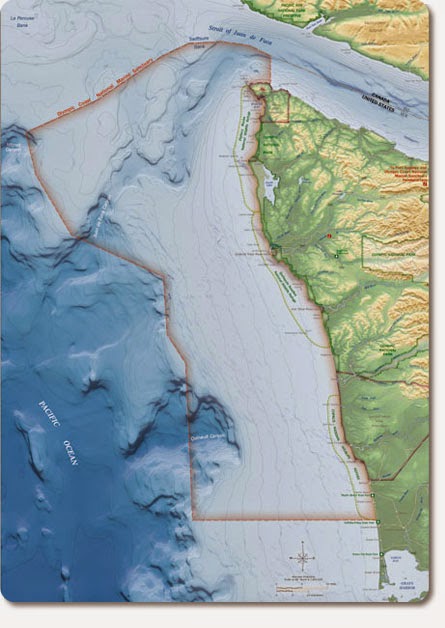 |
| Olympic Coast NMS |
Today, it’s impossible to imagine Congress passing such comprehensive environmental legislation. And having President Richard Nixon, a Republican, signing the legislation, as he did the Clean Water Act of 1972 and the regulatory controls of the Clean Air Act in 1970.
Congress still was a different place in 1992 when it passed the Oceans Act of 1992 which, among other things, authorized consideration of the Northwest Straits and the Olympic Coast as “active candidate” sites for Sanctuary designation.
The National Oceanic And Atmospheric Administration (NOAA) which administers the Sanctuaries Program chose to begin with the Olympic Coast designation process and, despite missteps in government-to-government consultations with coast treaty tribes, managed to hold public hearings, celebrate the official designation, and begin the management planning for the Sanctuary.
The basic regulatory framework of Sanctuary designation is relatively benign (no drilling, digging, removing archeological items, taking and disturbing wildlife) and is meant to work in concert with other federal, state and local regulations within its borders. Prohibiting Navy bombing practice within the Olympic Coast Sanctuary and requiring vessel traffic to skirt its boundaries are two specific prohibitions. (Sanctuary Regulations)
When NOAA and Washington state were ready to begin the designation process in 1994 for what was to be called the Northwest Straits National Marine Sanctuary (extending from the Canadian border to include the straits of Haro, Rosario and Juan de Fuca to Admiralty Inlet to the Pacific, the political flames were being fanned hard against the federal government. Newt Gingrich was leading the “Contract With America” Congressional charge, land use and conservation regulations were politicized as “takings” violating property rights, and local citizens and elected officials in the proposed Northwest Straits Sanctuary area talked of United Nations black helicopters and federal government takeover.
NOAA and Washington state agency representatives at public meetings predictably withered in that politicized heat. The basic regulatory framework in a Sanctuary designation, while benign, seemed irrelevant to address real issues within the planning boundaries, and, worse yet, because they were so benign, were seen as a kind of Trojan horse that would result in more draconian federal management regulations once a sanctuary was designated.
Local governments in the Northwest Straits counties passed resolutions against a Sanctuary designation. Second Congressional District Representative Jack Metcalf inserted in federal legislation a requirement that a sanctuary could only be designated with the consent of the counties involved (without specifying what that consent entailed). But that was enough for NOAA and the state to pack their tents and call the process off.
Rep. Metcalf and Senator Patty Murray, however, agreed to address the marine issues of Northwest Straits with a local process involving local governments and citizens in the Sanctuary planning area. That’s today’s Northwest Straits Marine Conservation Initiative -- non-regulatory, citizen-based research and education involving and involved with, but not coordinating, federal, tribal, state and local jurisdictions.
 |
| Olympic Coast NMS |
--Mike Sato
Glad to hear the NW Straits is still around. I edited/wrote some of their newsletters back in early 00s (aughts? otts? oughts?). Thanks again for an informative post.
ReplyDeletenice to see your post. how about Marine Communication do you have any blogs about this? thanks.
ReplyDelete